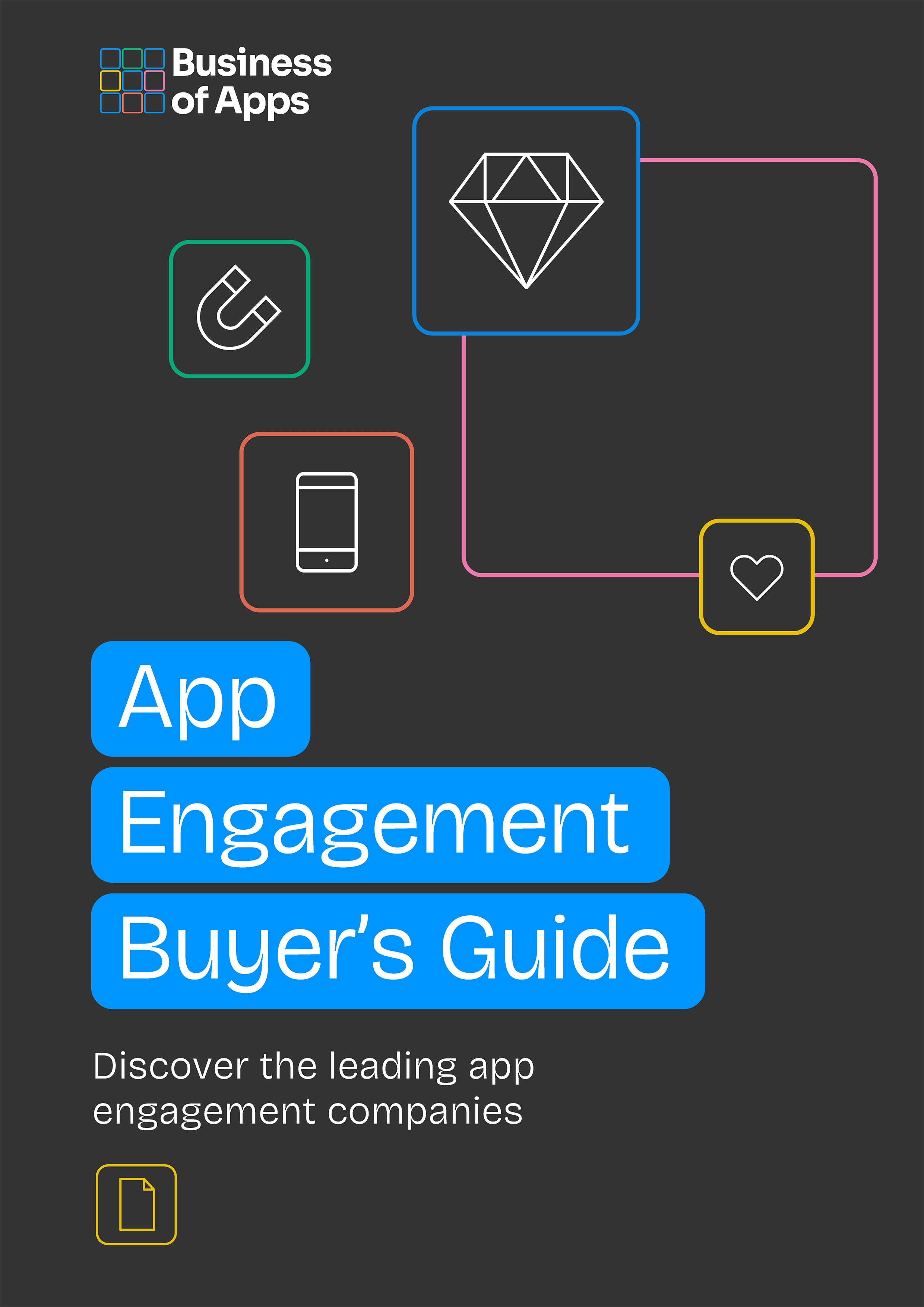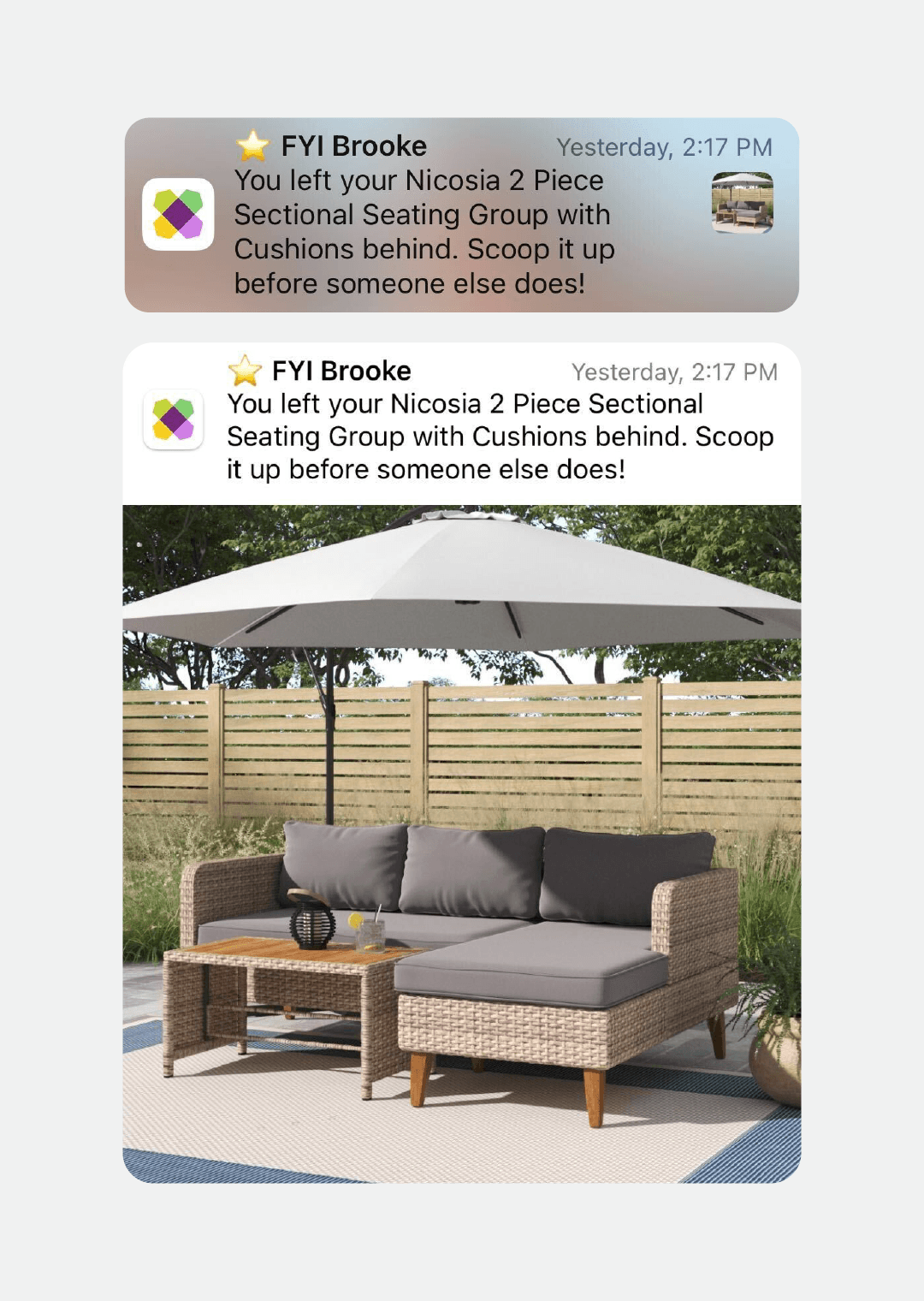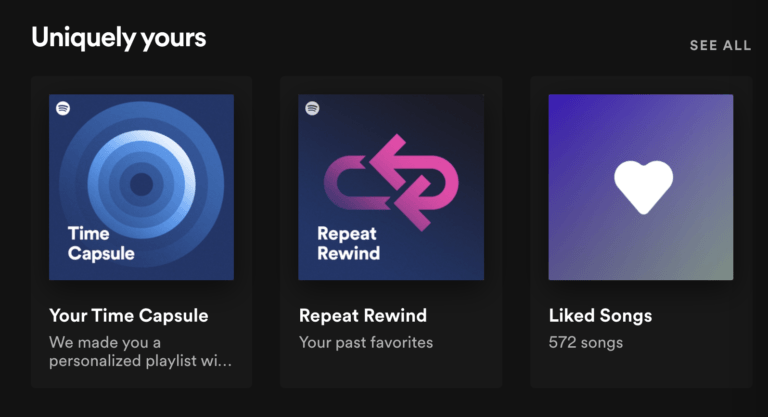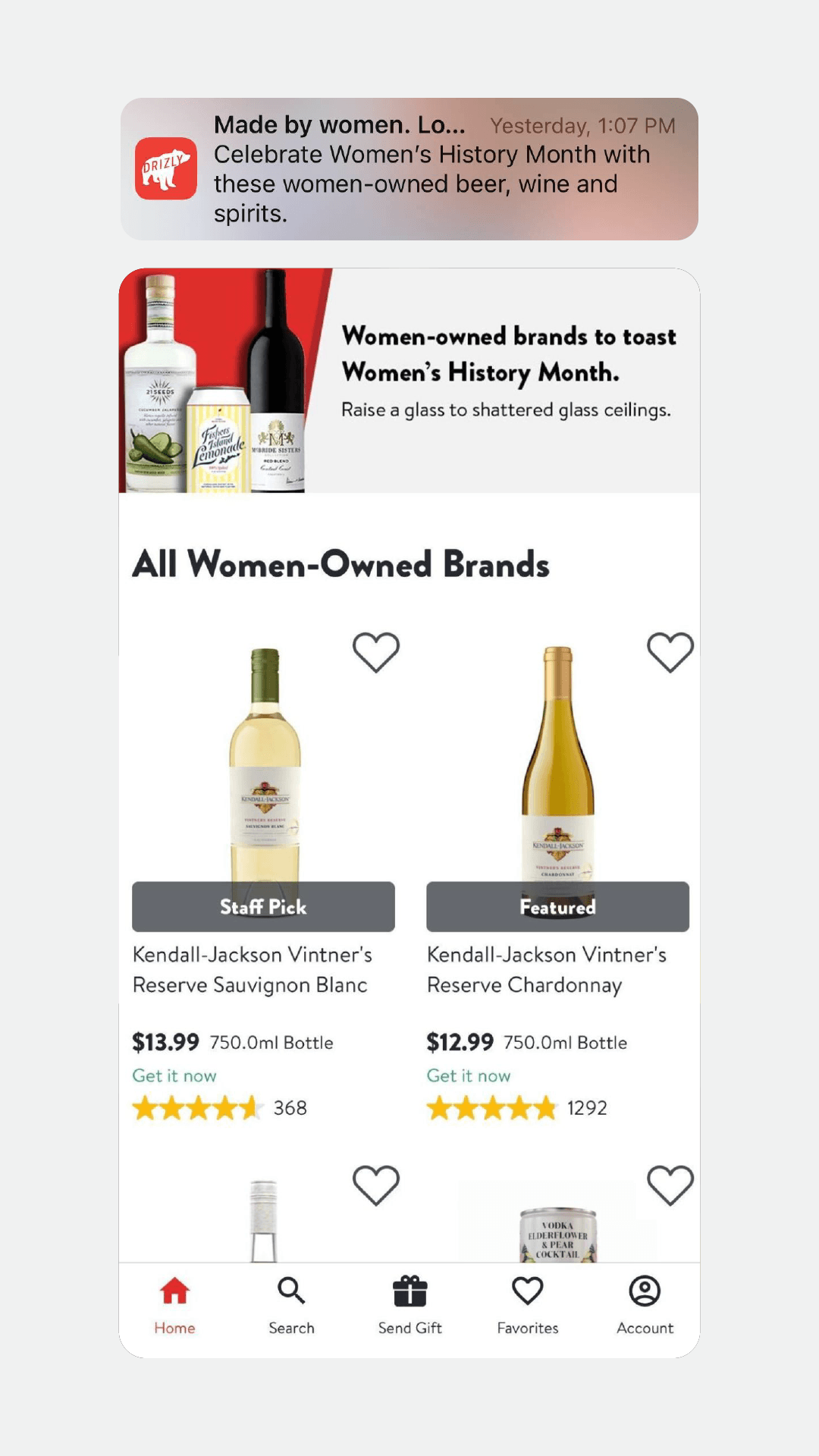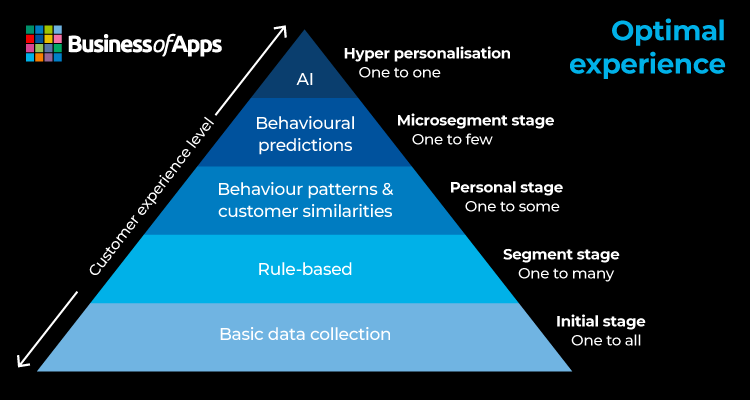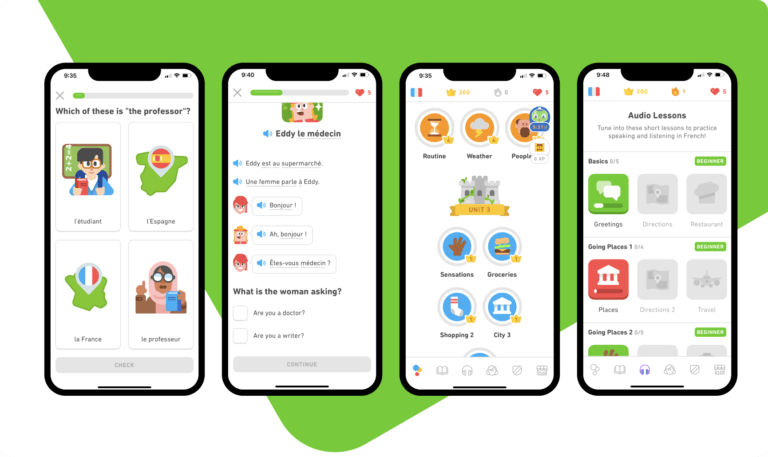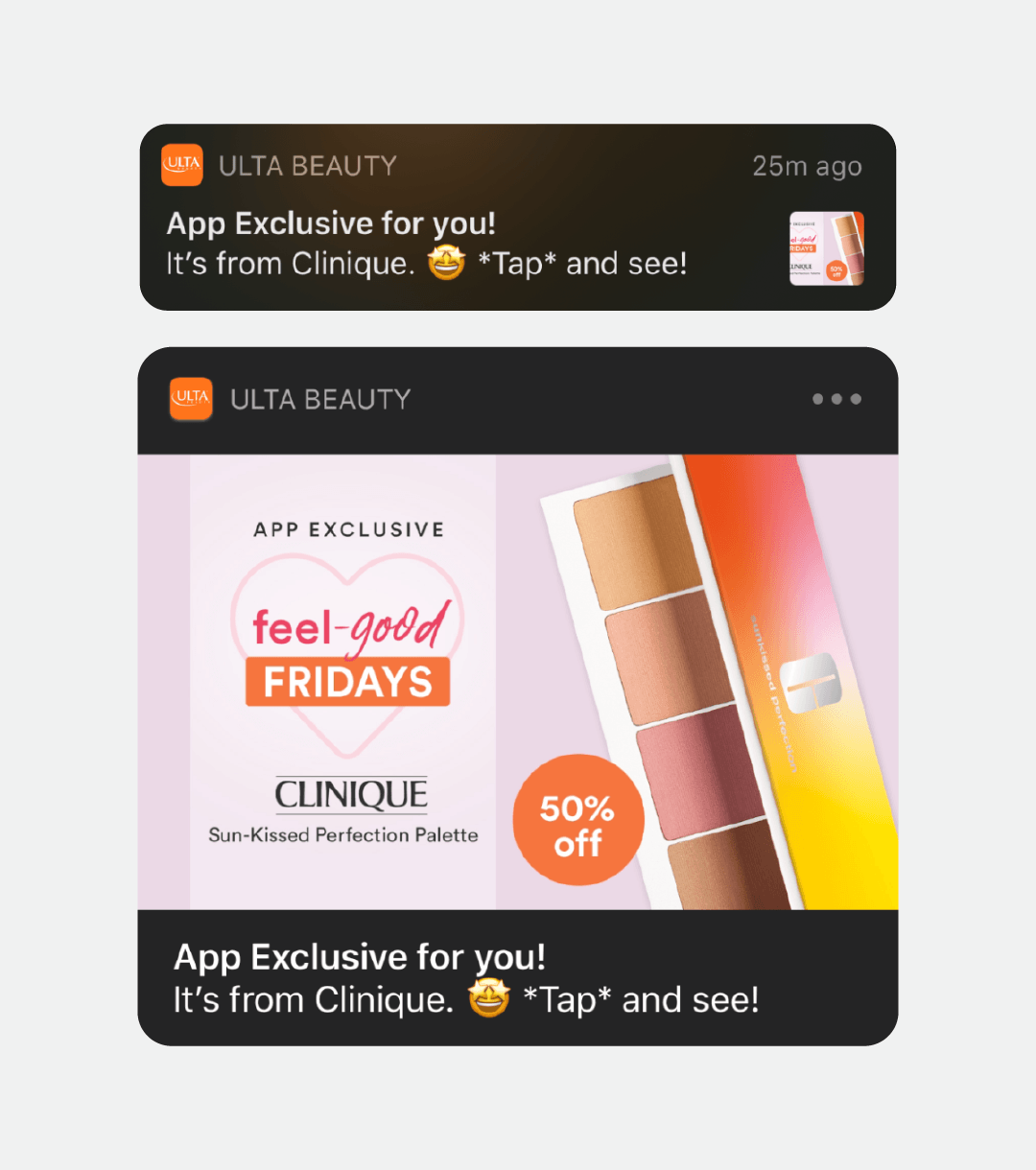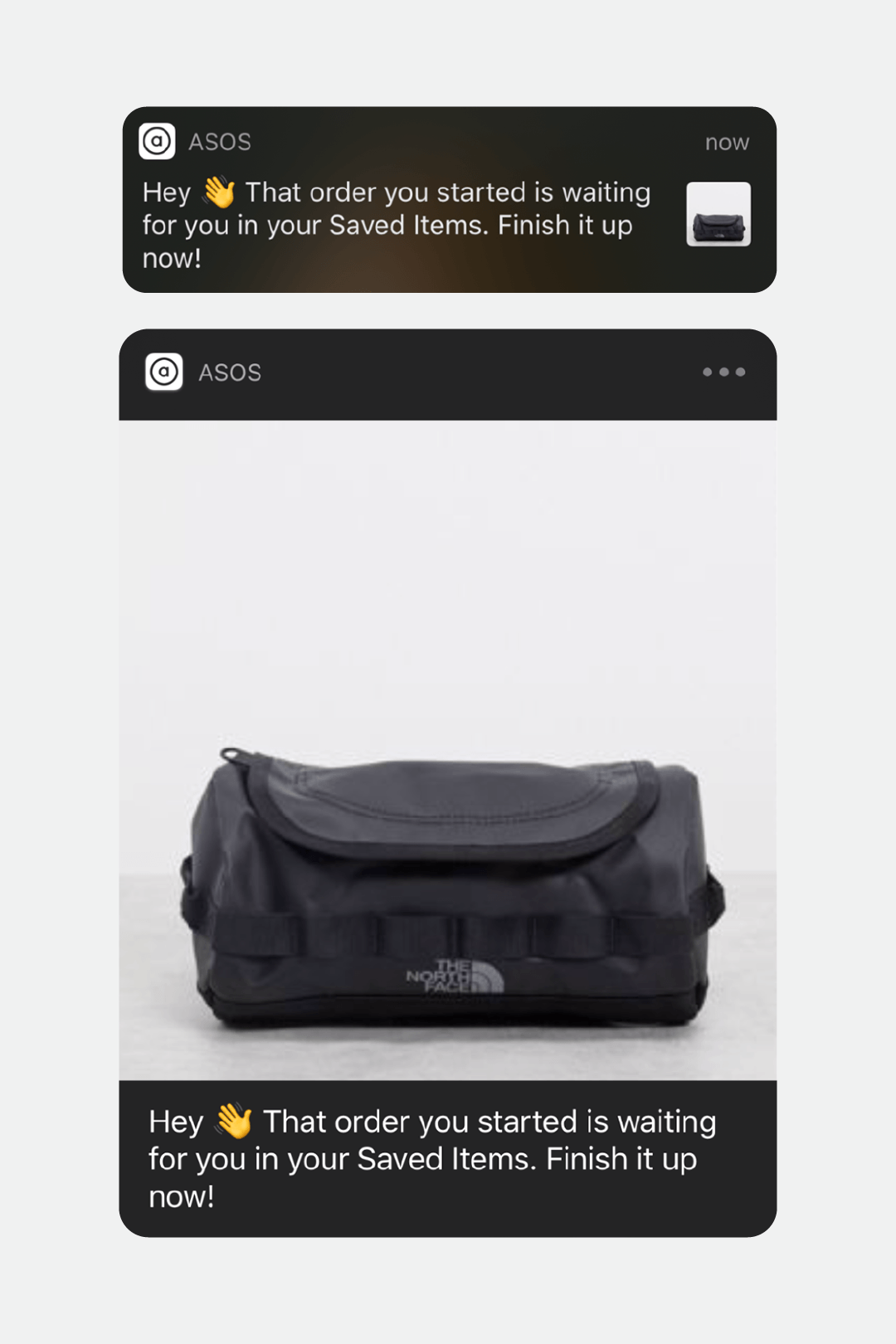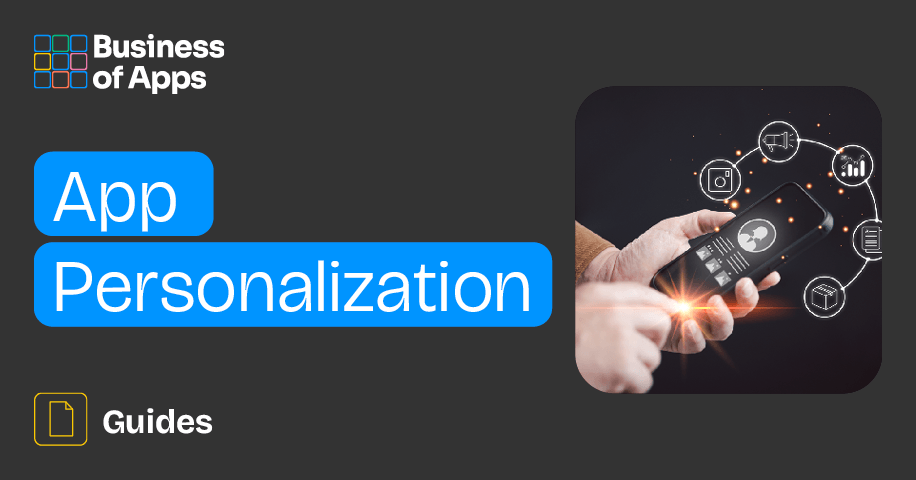
Personalization is key to an app’s success and sustainable growth. And with users increasingly expecting personalization beyond a simple first-name greeting, it’s of paramount importance to successfully fold effective personalization into your app and all communication channels around it. In this article, we’ll break down what mobile app personalization is, how it works, why it’s a great addition to your mobile marketing strategy, and how to successfully implement it into your app.
What is app personalization?
Broadly speaking, mobile app personalization is the process of enhancing the user experience and all messaging around your app with user-specific data – from user interests, demographic and behavioral data to location and time zone. App personalization aims to present users with experiences that are customized to their specific needs and wants rather than a broad, generic experience. The ultimate objective is to increase app engagement and retention by making a “wow” impression with your users.
App personalization comes in many different forms – push notifications, personalized in-app recommendations, special offers (e.g. discounts for high-interest products, loyalty programs), and more.
AdTech is changing — it’s time to find out how
AI, privacy shifts, and new monetization models are transforming the app industry. Learn more about these changes and other app marketing insights in the AdTech Trends 2025 Playbook by Yango Ads.
[Download Playbook]Before we go any further, we need to make an important distinction – personalization isn’t the same as customization. Customization is when users create unique experiences for themselves using functionalities built into the app by developers. Personalization, on the other hand, is all about app businesses providing unique experiences to each individual user based on that user’s taste and interests.
Another important distinction to make is that personalization isn’t segmentation either. Segmentation is the process of identifying specific types of audiences based on psychographics, demographics, location, behaviors, technology usage, and more. After you’ve collected the relevant data on your users, you can then proceed to create user cohorts or segments and deliver app experiences that each cohort is most likely to respond to. In other words, segmentation is an important prerequisite to personalization. It’s nigh impossible to deliver any sort of personalized experiences at scale without segmentation but more on that later.
Download our App Engagement Buyer’s Guide, covering all the trends, strategies, and metrics you need to know to ace app engagement in 2025.App Engagement Buyer's Guide
Key data points
- 89% of marketers report that app personalization results in an increase in revenue.
- 88% of marketers invest in personalization to improve the user experience.
- 80% of consumers are willing to share personal data in exchange for deals or offers.
- 63% of smartphone users are more likely to purchase from companies whose mobile apps offer them relevant recommendations on products they may be interested in.
- 58% of smartphone users feel more favorable toward companies whose apps remember who they are and their past behavior.
- 51% of smartphone users are more likely to use a company’s mobile app when browsing or shopping on a smartphone because they can get rewards or points.
Source: Google/Ipsos
Why is app personalization so important?
Let’s face it, the app space is crowded. With more than 1.96 million apps available on the Apple App Store and 2.87 million on the Google Play Store, the competition is huge. In this dog-eat-dog world, app developers and marketers alike can’t just focus on user acquisition if they want to stay competitive and continue to grow, they need to impress users, get them hooked into the app, and ensure their long-term loyalty. If you fail to achieve that, users will simply churn and migrate to one of the many alternatives.
And what better way to ensure users’ loyalty than by providing them with memorable experiences tailored to their specific needs and interests? By personalizing your app and the messaging around it, you increase the likelihood it will stand out from the crowd, guaranteeing users will use it regularly. Of course, mobile app personalization isn’t the only way to create app experiences that make users come back for more but is undeniably one of the easiest and cheapest ways to do so.
Benefits of mobile app personalization
If I haven’t convinced you yet that mobile app personalization is a big deal and paramount to an app’s success, let me try again by taking you for a deep dive into all the benefits of folding personalization into your app.
Improved user retention and engagement
There are a ton of apps out there, with plenty of apps having similar offerings too. In a saturated market, marketers and developers have a lot of convincing to do if they want to attract users and keep them coming for more.
App personalization could be a key differentiator here as it gives users a reason to continue using your app after they download it. Personalization can completely transform the way users interact with an app. In one survey, after receiving a personalized offer, 41% of respondents start searching for products they could apply it to. Furthermore, research also shows that the vast majority of users (72%) will only engage with personalized messaging.
Personalized push notifications by Wayfair
Source: Iterable
Let’s consider the push notifications above reminding the user of the items they’ve left in the cart. This is a great example of personalization through push notifications done right. The company (Wayfair) not only uses the customer’s name in the title of the push notification, but they also show a full picture of the abandoned product in the expanded notification. Make sure the notification deep links to the user’s cart when clicked and you’ve got yourself textbook-perfect app personalization.
Personalized content and custom-tailored experiences can help your app stand out. But more importantly, by giving users content and experiences specifically recommended for their history and interests, you incentivize them to keep returning for more instead of churning, which, in turn, boosts in-app engagement and your retention rate.
Better user experience
Most users won’t find an app that offers impersonal experiences to be particularly compelling. Users want to see services and products that apply specifically to them in a fully personalized app experience.
It’s no surprise then that 88% of marketers invest in personalization as a way of improving the user experience. App personalization allows marketers to create omnichannel experiences for their users where the app and all communication channels around it (SMS, push notifications, email, website) work in tandem to give users exactly what they want when they want it.
Personalized app experience by Spotify
Source: Spotify
Check out Spotify’s “Only You” in-app experience for another great example of personalization done right.
With personalization, users no longer have to search for the content they want, the app identifies that content and offers users a direct path to it, usually through notifications. This saves users time, gives them what they want faster, improves user satisfaction, and demonstrates the app’s value for a given user.
Increased user loyalty
When app personalization is successfully folded into an app, it keeps users happy and around for longer, which, in turn, boosts user loyalty and can potentially inspire them to recommend the app to friends and family.
Additionally, users who get the most value out of app personalization are more likely to leave a positive review on an app store, which is a guaranteed boost to an app’s retention rate as well as its user acquisition efforts.
More in-app conversions
By serving up personalized offers, discounts, and/or recommendations, mobile marketers are increasing the odds of a conversion. When an offer is generated based on user data, it’s much more appealing, and users are more likely to take you up on it.
Personalized offers by Drizly
Source: Iterable
What’s more, higher conversion rates mean more revenue for your personalization efforts. In fact, 89% of marketers say that app personalization increased their revenue.
Steps to app personalization
Let’s quickly cover the key steps to mobile app personalization and see how app personalization actually works.
The app personalization pyramid
Figure out what data you need and collect it
Personalization helps marketers understand users at every point in their journey. Unsurprisingly, that understanding comes with data. So, the first step to effective app personalization is data collection. The data you will be collecting includes but is not limited to demographics, location and time zone, purchase history, user interests, etc.
What data you collect is determined by how you are personalizing the user journey. For example, collecting data on a user’s purchase history might be useful if you want to push exclusive offers and/or discounts based on their taste.
In general, there are three broad categories of user data you can collect: demographic, contextual, and behavioral.
- Demographic data is about finding who your users are. Gender, age group, likes and dislikes all go under this category. The most straightforward method to gather this type of data is to simply ask your users during the app onboarding process.
- Contextual data is about finding out information about what device the user is using, the time of the day, or the current geographic location of a given user.
- And finally, behavioural data is all about recording a user’s in-app behaviors. How does a user use your app? How do they navigate it? These are the type of questions you should be asking yourself if you want to collect behavioral data and personalize based on it. For instance, if a user tends to view a certain type of product in a shopping app, the app can adapt in real-time by displaying more products that might be of interest to the user.
One important thing to always be mindful of is user privacy. Personalization is a tightrope act of creating unique experiences without infringing on users’ privacy. Be transparent about what data you collect and why you need it. Honesty and consent are key to personalization.
There’s no personalization without segmentation
We talked about this above, but it’s key to reiterate that personalization starts with segmentation. App user segmentation is the first step in any successful personalization campaign because it allows app owners and marketers to see their users in a completely new light. By collecting data on your users and using it to group them up into distinct cohorts or segments each with distinct interests, preferences, and behavior patterns, you can then create relevant, personalized user experiences at scale and ensure your users stay hooked in and engaged.
It’s useful to think of segmentation as a framework for personalization. It can help you understand what customers want, why they want it as well as why they do what they do when using your app. You can leverage this information to help them reach their desired goals as quickly as possible and in a way that corresponds to their unique traits and tastes, aka personalize their app experience.
Offer unique experiences
Now that you’ve transparently collected your data and have your users grouped up into cohorts, it’s time to start personalizing your app and all the interactions around it.
In-app personalization by Duolingo
Source: Storyly
You can do in-app personalization through product recommendations based on users’ tastes and preferences, unique offers and discounts, special loyalty programs, and more. The sky is the limit.
For instance, if you have a shopping app and record that a user regularly views a certain type of product, let’s say shoes, you can send them a unique discount for select items in the footwear category.
Offer unique messaging
It’s not just about what you offer, it’s also about how you say it and promote it. In the world of app personalization, custom-tailored messaging could be just as effective as a unique discount offer.
Going back to our example of a hypothetical shopping app, generating a unique discount for our user with a penchant for shoes isn’t going to be enough to impress them; you also have to “sell” the discount too by sending the user a personalized message (in-app, SMS, email, push, etc.) that will make them feel special and emphasize just how unique of a discount you’ve just offered them.
Personalized offer and messaging by Ulta Beauty
Source: Iterable
Using a user’s name is always a good start, but you can go further by sending users messages based on time of day, location, device type, preferences, etc.
And you can adopt this approach to all your communication channels (SMS, push, in-app, email) depending on what your goal is. Need to re-engage users? A custom-tailored push notification will surely do it. Want to remind users of an abandoned process? A personalized email or SMS might be just what you need.
Personalization for an abandoned process by ASOS
Source: Iterable
Additionally, adapting the same personalized communication style can also help boost brand loyalty by offering consistent messaging both on your app and across all channels around it.
Experiment and optimize
Mobile app personalization isn’t easy and it takes time to perfect, which means you need to test different strategies to find out what works best with your users.
For example, use A/B testing to see what types of messaging work best with your users. You can continuously optimize personalization through user feedback and trial and error. Most importantly, however, make sure that your personalization efforts adapt to how users are actually using the app.
Consider also segmenting users into cohorts that share the same interests or form part of the same demographic, contextual, or behavioral category. Doing this will help you optimize and streamline your efforts by making it easier and faster to offer personalized experiences and messaging.
Conclusion
To enable your app to thrive in the competitive mobile world and establish a strong connection with your users, mobile app personalization is simply a must-have. If you’re not already offering personalized experiences to your users, you’re missing out on the opportunity to impress and engage them, which, in turn, would help you boost retention rates and user loyalty. Implementing personalized app experiences is the best way to set your app apart and make sure it stands out from the crowd.


